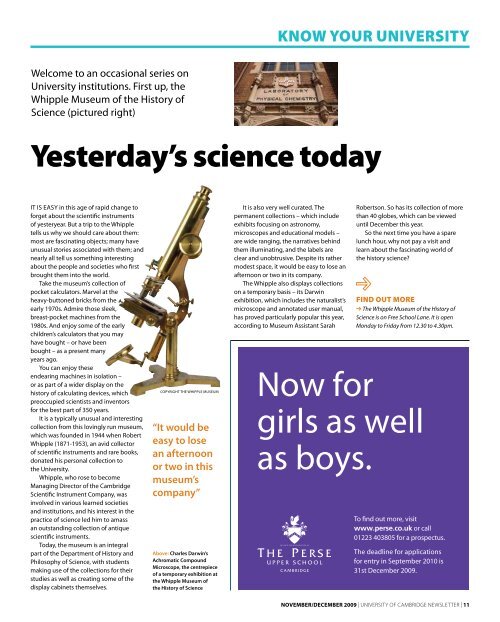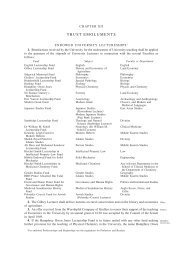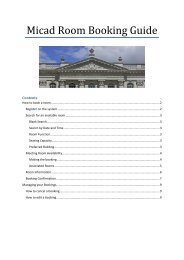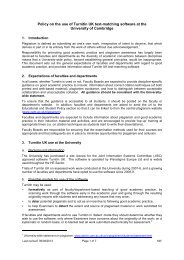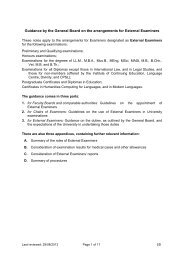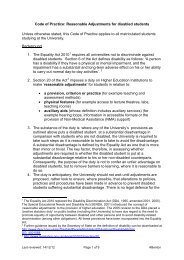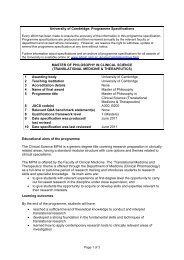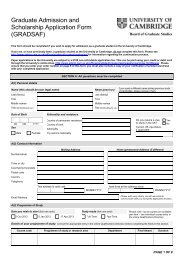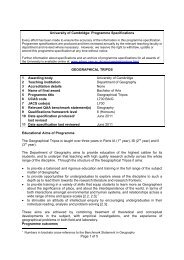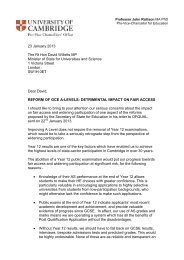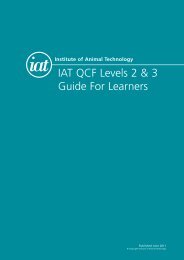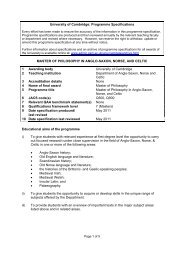Ghost town Spooks, hauntings and tall tales - the University Offices ...
Ghost town Spooks, hauntings and tall tales - the University Offices ...
Ghost town Spooks, hauntings and tall tales - the University Offices ...
You also want an ePaper? Increase the reach of your titles
YUMPU automatically turns print PDFs into web optimized ePapers that Google loves.
Welcome to an occasional series on<br />
<strong>University</strong> institutions. First up, <strong>the</strong><br />
Whipple Museum of <strong>the</strong> History of<br />
Science (pictured right)<br />
knOw yOur uniVerSity<br />
yesterday’s science today<br />
IT IS EASY in this age of rapid change to<br />
forget about <strong>the</strong> scientific instruments<br />
of yesteryear. But a trip to <strong>the</strong> Whipple<br />
tells us why we should care about <strong>the</strong>m:<br />
most are fascinating objects; many have<br />
unusual stories associated with <strong>the</strong>m; <strong>and</strong><br />
nearly all tell us something interesting<br />
about <strong>the</strong> people <strong>and</strong> societies who first<br />
brought <strong>the</strong>m into <strong>the</strong> world.<br />
Take <strong>the</strong> museum’s collection of<br />
pocket calculators. Marvel at <strong>the</strong><br />
heavy-buttoned bricks from <strong>the</strong><br />
early 1970s. Admire those sleek,<br />
breast-pocket machines from <strong>the</strong><br />
1980s. And enjoy some of <strong>the</strong> early<br />
children’s calculators that you may<br />
have bought – or have been<br />
bought – as a present many<br />
years ago.<br />
You can enjoy <strong>the</strong>se<br />
endearing machines in isolation –<br />
or as part of a wider display on <strong>the</strong><br />
history of calculating devices, which<br />
preoccupied scientists <strong>and</strong> inventors<br />
for <strong>the</strong> best part of 350 years.<br />
It is a typically unusual <strong>and</strong> interesting<br />
collection from this lovingly run museum,<br />
which was founded in 1944 when Robert<br />
Whipple (1871-1953), an avid collector<br />
of scientific instruments <strong>and</strong> rare books,<br />
donated his personal collection to<br />
<strong>the</strong> <strong>University</strong>.<br />
Whipple, who rose to become<br />
Managing Director of <strong>the</strong> Cambridge<br />
Scientific Instrument Company, was<br />
involved in various learned societies<br />
<strong>and</strong> institutions, <strong>and</strong> his interest in <strong>the</strong><br />
practice of science led him to amass<br />
an outst<strong>and</strong>ing collection of antique<br />
scientific instruments.<br />
Today, <strong>the</strong> museum is an integral<br />
part of <strong>the</strong> Department of History <strong>and</strong><br />
Philosophy of Science, with students<br />
making use of <strong>the</strong> collections for <strong>the</strong>ir<br />
studies as well as creating some of <strong>the</strong><br />
display cabinets <strong>the</strong>mselves.<br />
COPYRIgHT THE WHIPPLE MUSEUM<br />
“It would be<br />
easy to lose<br />
an afternoon<br />
or two in this<br />
museum’s<br />
company”<br />
Above: Charles Darwin’s<br />
Achromatic Compound<br />
Microscope, <strong>the</strong> centrepiece<br />
of a temporary exhibition at<br />
<strong>the</strong> Whipple Museum of<br />
<strong>the</strong> History of Science<br />
It is also very well curated. The<br />
permanent collections – which include<br />
exhibits focusing on astronomy,<br />
microscopes <strong>and</strong> educational models –<br />
are wide ranging, <strong>the</strong> narratives behind<br />
<strong>the</strong>m illuminating, <strong>and</strong> <strong>the</strong> labels are<br />
clear <strong>and</strong> unobtrusive. Despite its ra<strong>the</strong>r<br />
modest space, it would be easy to lose an<br />
afternoon or two in its company.<br />
The Whipple also displays collections<br />
on a temporary basis – its Darwin<br />
exhibition, which includes <strong>the</strong> naturalist’s<br />
microscope <strong>and</strong> annotated user manual,<br />
has proved particularly popular this year,<br />
according to Museum Assistant Sarah<br />
Robertson. So has its collection of more<br />
than 40 globes, which can be viewed<br />
until December this year.<br />
So <strong>the</strong> next time you have a spare<br />
lunch hour, why not pay a visit <strong>and</strong><br />
learn about <strong>the</strong> fascinating world of<br />
<strong>the</strong> history science?<br />
finD Out mOre<br />
➔ The Whipple Museum of <strong>the</strong> History of<br />
Science is on Free School Lane. It is open<br />
Monday to Friday from 12.30 to 4.30pm.<br />
Now for<br />
girls as well<br />
as boys.<br />
To �nd out more, visit<br />
www.perse.co.uk or call<br />
01223 403805 for a prospectus.<br />
The deadline for applications<br />
for entry in September 2010 is<br />
31st December 2009.<br />
november/deCember 2009 | UNIVERSITY OF CAMBRIDGE NEwSlETTER | 11


